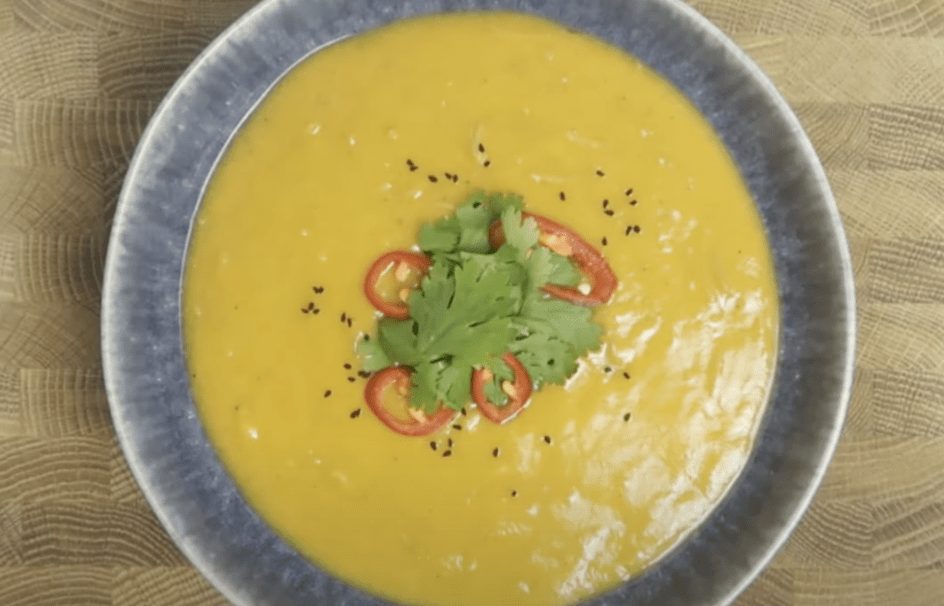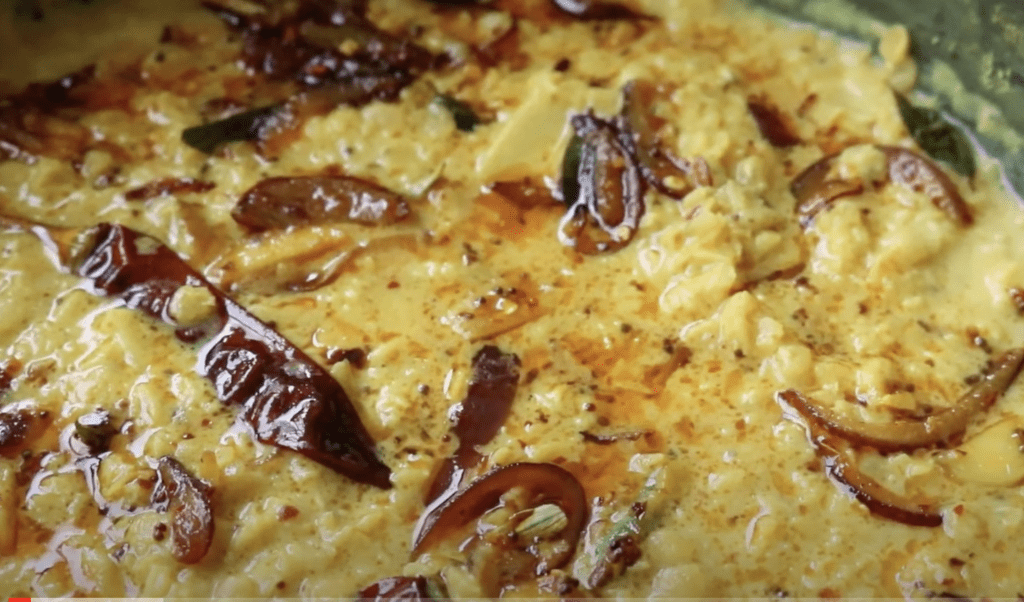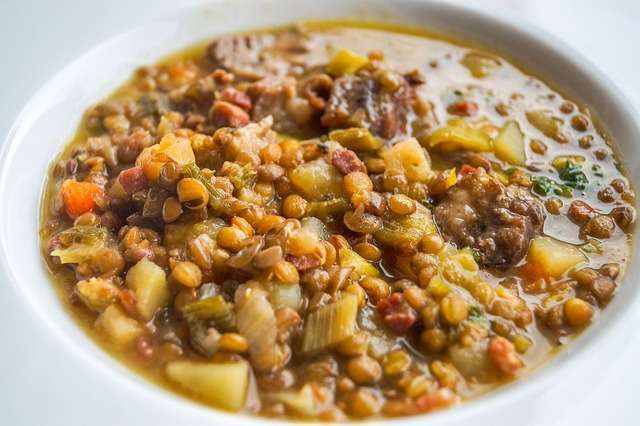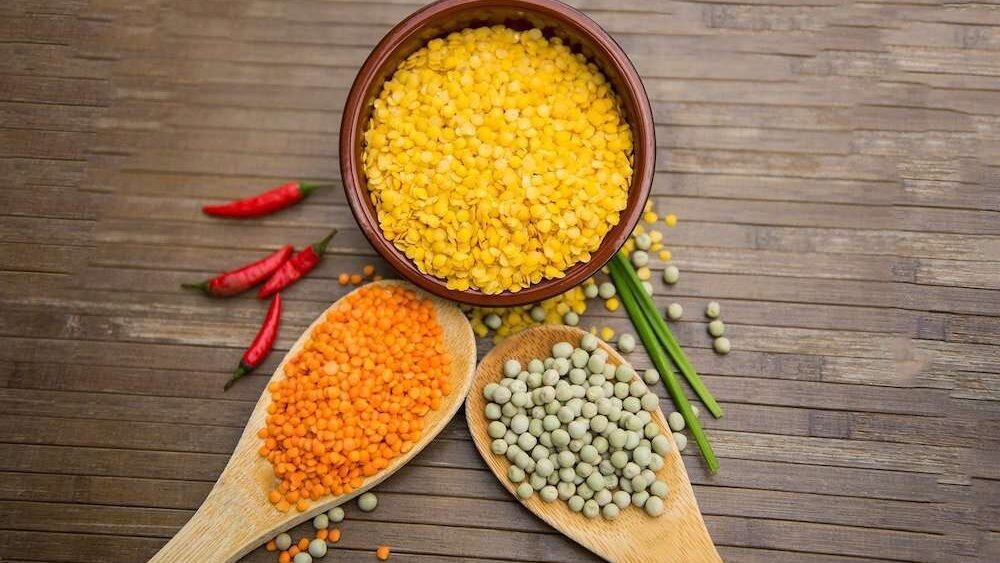What is it about the spicy lentil stew and curry that seems intriguing?
First I thought it was something new and it was not. Then to find out how nutritious and protein rich it is. And amazingly how simple to prepare like the ubiquitous pasta.
This story began 6 years ago when I picked up the first version of Ainsley Harriot’s Spicy Lentil Soup at Waitrose. I was looking for something soupy with a kick for a cold winter’s weekend night.
The intention was Mulligatawny but I saw this on the shelf and it had the word spice. It was part of a new range. Frankly Ainsley Harriot’s name and infectious smile added much of the oomph behind the decision. So began the Spicy Lentil Stew and Curry tale. It came in cup sized sachets and there are three in the box.

I never ate anything that had lentils in it before or at least I thought. The first sip was nice, mildly spicy yet it had a familiar taste. I went back to the kitchen cabinet and pulled out the box to have a read. It did not provide any clues. I knew that I tasted it before but could not place it. Over the weeks I had finished the remaining 2 sachets .
The penny drops….
Then the penny dropped one day. A lightbulb moment! It was Dhal!, the Indian dish.
It was similar in taste to one of two common vegetarian sides dishes that one would order in an North Indian restaurant with a meat based main dish. The potato curry called Aloo Gobi is the other. You either had it with naan ( flat leavened bread ) or rice. Though I have seen and heard of lentil soup in Western and Middle Eastern restaurants I never came across it in Indian restaurants.
Umbrella words – lentils and dhal.
As I read up to understand more, I realised that Lentils are part of the pulse family and a legume. It was also one of most the nutritious plants with loads of protein and other important nutrients. Does explain why vegetarians in the sub continent are just as hardy.
Dhal is a Hindi word and refers to dry split pulses which includes lentils as well as other pulses. So the word is sort of an umbrella word. Harriot’s lentil soup used red and green grams according to the box. They are not lentils but from the pulse family. Lentil it appears is now similar in usage to dhal, a interchangeable term that covers split pulses and not just lentils.
To summarise, dhal is the Hindi word and lentil the English word to describe split pulses dishes and not just lentils. Quite understandable when you see raw lentils and split pulses in the stores and as dishes. Very similar in shape, just the variation in colours, shape and size. And mostly similar in taste and texture.
So the Spicy Lentil Stew and Curry could just as well be the Spicy Dhal Stew and Curry.
India, vegan and vegetarian

Dhal and lentils in South Asia are overwhelming served as vegetarian and vegan dishes. Meat or diary products are not part of the dhal and lentil dishes. It comes as a highly aromatic and spicy dish in the subcontinent and in overseas Indian restaurants including takeaways.
India has always as part of its culture and religions had vegetarians all the way to vegans. Their families for generations have remained so. We are not talking about a sub-caste or a small segment of society. It is across India. Their array of vegetarians and vegan dishes are immense. You can go for days, weeks and months being vegetarian and vegan for all your meals with no drop in quality or satisfaction. The availability, range and variety of lentils and pulses is the main reason.
That variety extends to preparation of food and dishes for different meal times. So dishes meant for breakfast are distinct from lunch and dinner. So you are not eating the same things at each meal or on each day. Rice or Naan being the exception.
Not including meat
I am aware that people do add meat to dhal and lentil dishes. It seems we are dealing with chefs’ license and home cooks who are looking for a convenient all-in-one stew. But not something done with Lentil and Dhal dishes in the main. Meat dishes however can be served as as part of the meal.
My thoughts are firstly these lentil and dhal dishes can stand on their own, taste, presentation and texture wise. Secondly due to culture and religion, meat is out. Another possibility is that they are already rich in protein. A better way to sum it up is the desire to protect their food authenticity and heritage.
Work related travel to India spelled opportunity to understand many aspects of the culture. Inevitably I and maybe one or two persons would have meat dishes, the rest were on vegetarian dishes only. The latter group included non vegetarians observing religious days. Meat on such occasions are avoided. So lentil (called dhal) based vegetarian dishes were always there.
Food in India is a prominent manifestation of culture. I came to know of Jainism and Brahmins. In fact the best tasting meat dishes of Indian origin come from the Indian Muslims. Famous for their signature lamb and chicken biryanis.

Lentils and pulses are not just confined to the sub-continent. I have mentioned the Middle East and the Caribbean. The Middle East in particular are big on lentils and pulses. The lentil soup is big in the Levant region. Then there is the popular hummus and the falafel. The Caribbean for their lentil stews.
Simple preparation
It did surprise me how simple preparation are for a lentil or dhal dishes. There are so many recipes that covers various regional variations. I am not going to pick any particular recipe as there are many good ones on the internet. However I will list out the common steps for nearly all the dishes. This will help address my view on its simplicity.
Split chickpeas a pulse but not a lentil is probably the most popular pulse. Followed by red, yellow and green lentils and pigeon peas or red gram. They are all treated and cooked pretty much the same way, washed to remove grit and other impurities.
The 3 steps
The first and an important step is to soak them. These range from 2 hrs to overnight. Overnight if they not dehulled and split. Soaking allows more of the essential nutrients to be absorbed by the body. The older cultures know this well. It also neutralises elements that are not helpful such as phytic acid. If the high nutritional value draws one to the dish, it will be a shame to not soak and then miss out on the body absorbing it.
Second is to bring it to a boil in a pot and then to allow it to simmer for quite sometime. Individual recipes cover the required period for this. The length of time also relates to breaking it down for soup or to retain the texture for stew and curries and for personal preference.
The third step can be one of two forms. First is to add the boiled lentils or pulses to an already cooking stew of vegetables, the common approach in Western and Caribbean cooking. The spices are already in the stew of vegetables, simmering away separately.
The second alternative is to prepare the garnish separately and bring it together when both the garnish and the lentil are cooked and ready. This is the South Asian way.
The garnish is a host of spices, chillies and onions that are fried. The dry spices are first roasted for a few minutes on a pan until they become fragrant and set aside. Chillies, onions and other likely ingredients such garlic are fried in oil and then roasted spices added. This is where the aromatic smell and taste comes about.
Yet another comfort food
If you haven’t tried the Spicy Lentil Stew and Curry, pick one up at the nearest Indian restaurant or takeaway. I would recommend the Tarka Dhal.
Have it with long grained or basmati rice or naan bread. You can then venture to do your own or create a stew with vegetables with cut carrots, tomatoes and diced or cubed potatoes.
By the end, I am sure a pack of your favorite pulse or lentils will be in the cupboard like your favourite pasta as ingredients for quick and easy comfort food.
My guess is in time, there will be starter packs in local supermarkets to do quick meals. Lentils, spices etc in a pack with cooking instructions.
